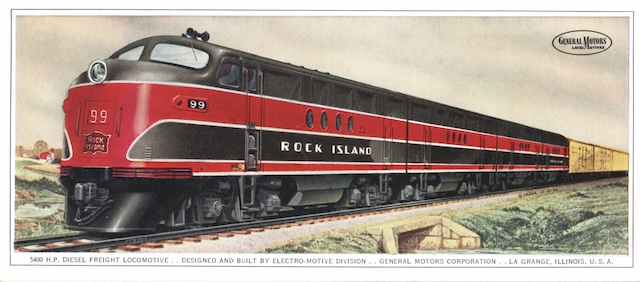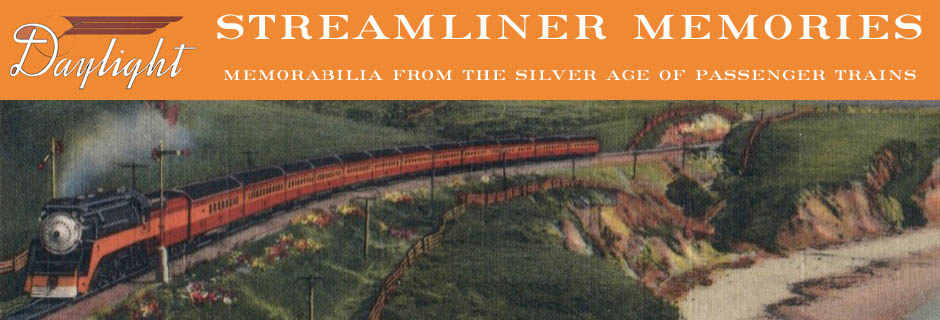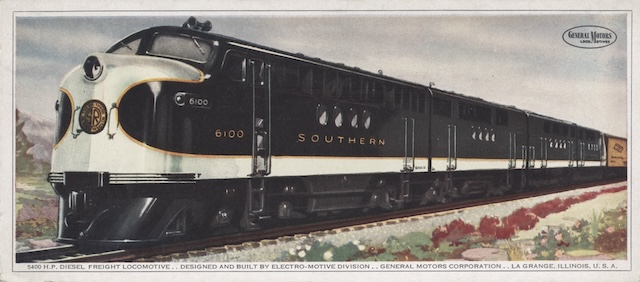If 22 railroads bought FT locomotives, which ones didn’t? The main ones were coal haulers, such as C&O and N&W, and other railroads with innovative steam programs, such as Pennsylvania and Union Pacific. These railroads thought they could make steam as efficient as Diesels and so didn’t jump on the General Motors bandwagon until after World War II.

This card is signed B. Dedek and appears to be dated October 38, 1943, six months before the locomotive was delivered.
Rock Island ordered 20 A units and 16 B units. Although they were numbered in the 70s, 80s, and 90s, they seemed to have been delivered in reverse order, with the high 90s showing up in April 1944, the 80s and low 90s later in 1944, and the 70s in 1945. Thus, number 99 shown in this painting may have been the first one delivered. Continue reading →










